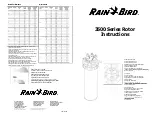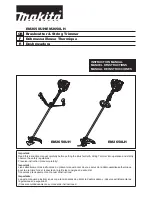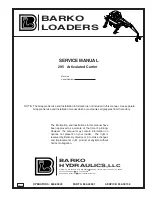
Well-designed, quality tools and equipment
Well-designed, quality tools and equipment
|
| farmersfriend.com
farmersfriend.com
10
1.
Connect the Header Flush Valve to one end of your
polyethylene tubing (take the cap off until you have flushed
the line in
Step 13
)
2.
Beginning at the flush valve, use the wire staples to fasten
the Black Polyethylene Tubing across the supply end of
your caterpillar tunnel. This is your “Header” line.
3.
On the opposite (supply) end of Black Polyethylene
Tubing, cut the tubing to about 3" narrower than the width
of your tunnel (or pad).
4.
Connect the Elbow to the supply (cut) end of your polyeth-
ylene tubing—pointing out of the tunnel.
5.
Attach the remaining piece of polyethylene tubing to the
supply end of the Elbow (cut shorter if preferred).
6.
Connect the filter/valve/pressure regulator assembly to
the polyethylene tubing.
7.
Using an 8mm Flat Tube Punch, punch holes into the
polyethylene tubing at the desired spacing (we recommend
3 lines/30” bed — at approximately 5", 15" and 25" in the bed).
(
Note:
In the case of a misplaced hole, while punching the
black tubing with the flat tube punch, we have provided
goof plugs
. To insert, push the small end of the goof plug
into the hole until you hear a “pop”.)
8.
Push a Drip Tape Valve into each hole.
A.
Make sure the black and blue collars are both screwed
all the way toward the valve.
B.
The valve should make a “popping” sound when it fully
seats in the tubing
C.
Snug the black collar onto the polyethylene pipe.
9.
Roll out the drip tape for each line and attach the supply
end of the drip tape to the drip tape shutoff valve (see
tip
#3
). Make sure the drip emitters are facing up.
Make sure the drip emitters are facing up.
Assembly
Instructions
Step 1
Step 2
StepS 4 and 5
Step 6
Step 7


































